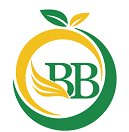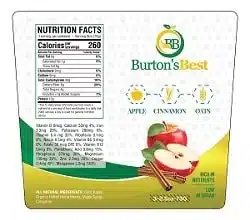Understanding food labels is essential for making informed decisions about the foods we eat. Food labels contain important information about the nutritional content of a food product, the ingredients used to make it, and any potential allergens. Here are some key things to look for and understand when reading food labels.
Serving Size
The serving size is the recommended amount of the food product to be consumed in one sitting. It is important to pay attention to the serving size because the nutritional information on the label is based on this amount. If you eat more than the recommended serving size, you will need to adjust the nutritional information accordingly.
Calories
Calories are a measure of the energy in a food product. The number of calories per serving is listed on the food label. This information can help you manage your calorie intake and maintain a healthy weight.
Macro-nutrients
Macro-nutrients are the three main types of nutrients that make up the bulk of our diet: carbohydrates, protein, and fat. The food label lists the amount of each macro nutrients in grams per serving. It is important to pay attention to the type and amount of macronutrients in a food product, as they can affect our health in different ways. For example, foods high in saturated fats can raise our cholesterol levels, while foods high in fiber can help us maintain healthy digestion.
Vitamins and Minerals
Many food products contain vitamins and minerals that are essential for our health. These are listed on the food label, along with the percentage of the recommended daily intake for each nutrient. It is important to ensure that you are getting enough of these nutrients in your diet, as they can help prevent deficiencies and maintain overall health.
Ingredient
The ingredients list on a food label contains a list of all the ingredients used to make the product, in order of their prevalence. It is important to pay attention to the ingredients list, especially if you have any food allergies or intolerance. Common allergens like peanuts, wheat, and soy must be listed on the label.
Other Information
Food labels may also contain other information such as the product’s net weight, manufacturer’s name and address, and any health or nutrition claims. It is important to read and understand these claims, as they can affect our perception of the food product.
Reading food labels can be overwhelming, but with a little practice, it becomes easier to decipher the information. Here are some tips to help you understand food labels:
- Look for simple ingredient lists: Foods with fewer ingredients are often healthier than those with long, complicated ingredient lists. Choose products with ingredients you recognize and can pronounce.
- Pay attention to serving sizes: Many food products contain multiple servings per package. Make sure you are aware of the serving size and adjust the nutritional information accordingly.
- Choose foods with high nutritional value: Look for foods that are high in nutrients like vitamins, minerals, and fiber, and low in added sugars and saturated fats.
- Be aware of claims on the label: Be skeptical of claims like “low-fat” or “all-natural” and read the nutritional information and ingredients list to make sure they are accurate.
- Don’t rely solely on the front of the package: Food manufacturers often use the front of the package to make health claims or draw attention to certain features, but the real information is on the back of the package in the nutrition and ingredient lists.
Understanding food labels is an important part of making healthy food choices. By paying attention to serving sizes, calories, macro-nutrients, vitamins and minerals, ingredients, and other information on food labels, you can make informed decisions about the foods you eat. Remember to look for simple ingredient lists, choose foods with high nutritional value, and be aware of claims on the label. With a little practice, you can become an expert.

